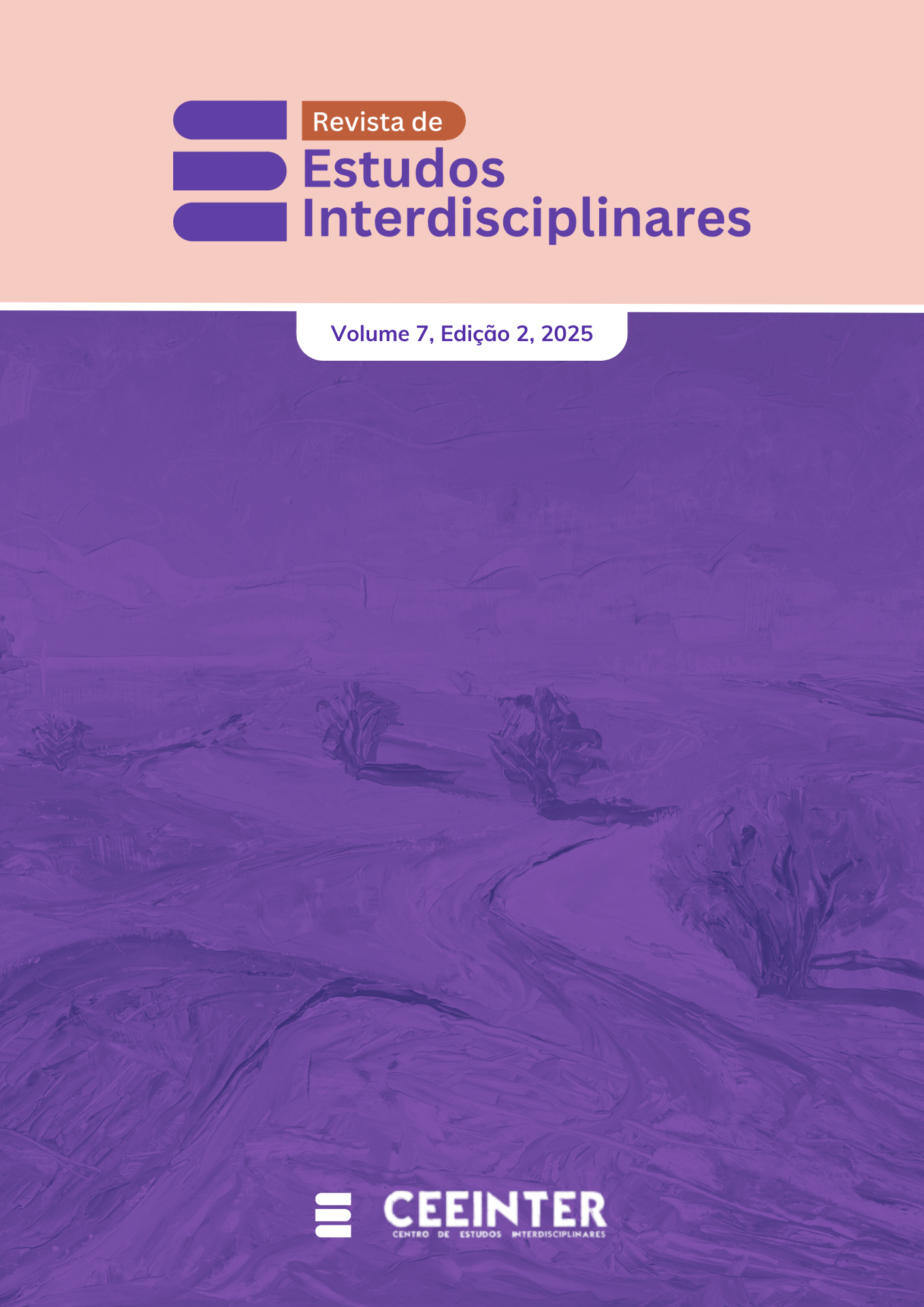TOURNIQUETS IN PRE-HOSPITAL CARE
REGULATORY CHALLENGES, TRAINING, AND PROPOSALS FOR VICTIMS OF FIREARM-RELATED TRAUMA
Visualizações: 190DOI:
https://doi.org/10.56579/rei.v7i2.1917Keywords:
Tourniquet, Pre-hospital care, Anvisa, Severe hemorrhage, RegulationAbstract
The use of tourniquets is a historically effective practice in controlling severe hemorrhages, especially in military contexts. In Brazil, their adoption in pre-hospital care (PHC) faces regulatory and operational challenges, limiting their life-saving potential. Severe hemorrhages account for up to 30% of preventable deaths in urban trauma cases. Studies indicate that properly applied tourniquets can reduce mortality by up to 85%. However, the lack of regulation by ANVISA and insufficient training hinder their safe and effective dissemination. This study analyzes the effectiveness, international protocols, and barriers to implementing tourniquets in Brazil, with emphasis on ANVISA regulation and training. Specifically, it evaluates the effectiveness of tourniquets in both civilian and military contexts, identifies barriers, and proposes measures such as regulation and inclusion of the device in emergency kits. The methodology includes a literature review, analysis of international protocols (TCCC, NATO), and mortality data. Results show that early tourniquet application significantly increases survival chances. Total arterial occlusion time is the main factor in complications such as tissue necrosis. Regulation by ANVISA and training programs are essential to align Brazil with best practices, reducing preventable deaths from severe hemorrhages.
Downloads
References
ADEN, J. K.; AHIMER, A.; BARUCH, E. M.; BENOV, A.; BERG, A. L.; GLASSBERG, E.; KRAGH, J. F. JR.; SHINA, A.; SHAIFER, A.; YITZHAK, A. Confidence-competence mismatch and reasons for failure of non-medical tourniquet users. Prehospital Emergency Care, v. 21, n. 1, p. 39-45, 2017. DOI: https://doi.org/10.1080/10903127.2016.1209261
ALBINO, G. R. A. APH tático: atendimento pré-hospitalar em operações militares. REASE [Internet], 13 abr. 2024, v. 10, n. 4, p. 1320-1334. Disponível em: https://periodicorease.pro.br/rease/article/view/13565. Acesso em: 16 mar. 2025. DOI: https://doi.org/10.51891/rease.v10i4.13565
BEARARE, S. C. A ciência das armas: pot-pourri artigos técnicos: Revista Propoint (Ed. 1~6). 1. ed. Coroados, SP: S Guerra Design, 2023.
BERNARDIN, B.; KHWJA, K.; MALO, C.; NEMETH, J. Prolonged prehospital tourniquet placement associated with severe complications: a case report. CJEM, v. 17, n. 4, p. 443-446, 2015. DOI: https://doi.org/10.1017/cem.2014.44
BRASIL. Ministério da Saúde. Protocolo de Suporte Básico de Vida. Brasília, 2016.
BRAGA, Dayane Carla Barros et al. O uso do torniquete em APH de combate. Adson, Ciências da Saúde, v. 29, ed. 142, jan. 2025. DOI: 10.69849/revistaft/th102501250804. DOI: https://doi.org/10.69849/revistaft/th102501250804
BROWN, D. J.; KHAROD, C. U.; MAPP, J. G.; REDMAN, T. T.; ROSS, E. M.; WAMPLER, D. A. The tourniquet gap: A pilot study of the intuitive placement of three tourniquet types by laypersons. Journal of Emergency Medicine, v. 54, n. 3, p. 307-314, 2018. DOI: https://doi.org/10.1016/j.jemermed.2017.09.011
BUTLER, F. K. Military history of increasing survival: the U.S. military experience with tourniquets and hemostatic dressings in the Afghanistan and Iraq conflicts. Bulletin of the American College of Surgeons, v. 100 (Suppl 1), p. 60, 2015. DOI: https://doi.org/10.55460/DXBQ-YHD0
CALLAWAY, D. W.; FABIANO, S. E.; HANNON, T.; PUCIATY, A.; ROBERTSON, J. Case report: life saving application of commercial tourniquet in pediatric extremity hemorrhage. Prehospital Emergency Care, v. 21, n. 6, p. 786-788, 2017. DOI: https://doi.org/10.1080/10903127.2017.1332126
CARAPEBA, Gabriel de Oliveira Lima; SILVESTRE, Rodrigo Tadeu Rodrigues; CHOJI, Cristiano Hayoshi; BEARARE, Sandro Christovam et al. Manual de atendimento pré-hospitalar para vítimas por arma de fogo. 2. ed. [S. l.]: Brazilian Journals Editora, 2023.
CRUZ, B. G.; VENTORINI, K. G.; RIVELLI, A. M.; FOFANO, G. A.; OLIVEIRA, L. M.; ANDRADE, F. M. Capacitação em atendimento pré-hospitalar tático de acadêmicos de medicina para o treinamento da comunidade civil: uma abordagem prática. SODEBRAS, v. 19, n. 222, 2024.
DULCE, D.; EISENKRAFT, A.; GAVISH, L.; GERASSI, S. D.; MARK, N.; NACHMAN, D.; WAGNERT-AVRAHAM, L. Assessment of the efficacy and safety of a novel, low-cost, junctional tourniquet in a porcine model of hemorrhagic shock. Military Medicine, v. 185, n. 1, p. 96-102, 2020. DOI: https://doi.org/10.1093/milmed/usz351
GOMES, L. M. C.; MACHADO, R. E. T.; MACHADO, D. R. Hemorragia exsanguinante: uma introdução importante na avaliação primária do trauma. Revista Científica UNIFAGOC, v. 6, n. 2, 2021. Disponível em: https://periodicorease.pro.br/rease/article/view/24619. Acesso em: 16 mar. 2025.
JOARDER, Maisah et al. Impact of time and distance on outcomes following tourniquet use in civilian and military: A scoping review. Injury, 2023. Disponível em: https://www.sciencedirect.com/science/article/pii/S0020138323000360?casa_token=yzVFTo4k9Z4AAAAA:Nf_e8rFU-GuLg1uVTWoC_cSc8jcrJVWai5L1y-baU9KJnTcLiZBzuSNFAjB1JsXVE3_-2EM-2w. Acesso em: 16 mar. 2025.
MILL, V.; MONTÁN, C.; WELLME, E. Evaluating tourniquet use in Swedish prehospital care for civilian extremity trauma. European Journal of Trauma and Emergency Surgery, v. 47, n. 6, p. 1861-1866, 2020. DOI: https://doi.org/10.1007/s00068-020-01341-0
NETO, Antônio Alves de Oliveira; ARAÚJO, Andrey Hudson Interaminense Mendes de; FARIAS, Djair Soares de. A efetividade dos torniquetes no atendimento pré-hospitalar. Research, Society and Development, v. 11, p. e582111124619, 2022. Disponível em: https://rsdjournal.org/index.php/rsd/article/view/24619. Acesso em: 16 mar. 2025. DOI: https://doi.org/10.33448/rsd-v11i11.24619
ODE, Gabriella et al. Emergency tourniquets for civilians: can military lessons in extremity hemorrhage be translated? Journal of Trauma and Acute Care Surgery, v. 79, n. 4, p. 586-591, 2015. Disponível em: https://journals.lww.com/jtrauma/Fulltext/2015/10000/Emergency_tourniquets_for_civilians__Can_military.9.aspx?casa_token=Jv90QBAUrPkAAAAA:m3i4gOluFP7CchoAa4QqJjsDkSkTQgE1iRwAYnDIbNF2CnF3dXCwH4bjiJIyOgcUHRZNgSa6ov57kp1PTWGVS339Lw&casa_token=MH0cRREaPs0AAAAA:SoMw2Ip7FPTGh3hvqketHM2OBzcQhtqVARdrAv0y5RD5xSCXcsOvP4D2S8PS_iT9qAzVbhY5Gj0HUzefCG-mgTH9jw. Acesso em: 16 mar. 2025.
DE SALES, L. B.; DA SILVA, R. R. N.; PACHECO, C. A.; DE LIMA, N. B. B.; CARVALHO, M. DA C.; LOPES, G. DE S. Os desafios do uso do torniquete no atendimento pré-hospitalar. Revista Contemporânea [Internet], 21 dez. 2023 [citado em: 8 jan. 2025], v. 3, n. 12, p. 30858-30877. Disponível em: https://ojs.revistacontemporanea.com/ojs/index.php/home/article/view/2808. Acesso em:16 mar. 2025. DOI: https://doi.org/10.56083/RCV3N12-307
SCHROLL, Rebecca et al. A multi-institutional analysis of prehospital tourniquet use. Journal of Trauma and Acute Care Surgery, v. 79, n. 1, p. 10-14, 2015. DOI: https://doi.org/10.1097/TA.0000000000000689
SILVA, Maíra de Lima et al. Eficácia do torniquete em vítimas de amputação traumática grave executado pelo atendimento pré-hospitalar. In: Anais do Congresso Multiprofissional em Urgência e Emergência de Pernambuco. Anais... Cabo de Santo Agostinho (PE): Hotel Canariu's de Gaibu, 2019. Disponível em: https://www.even3.com.br/anais/Comuepe19/201800-EFICACIA-DO-TORNIQUETE-EM-VITIMAS-DE-AMPUTACAO-TRAUMATICA-GRAVE-EXECUTADO-PELO-ATENDIMENTO-PRE-HOSPITALAR. Acesso em: 13 mar. 2025.
TEIXEIRA, G. S. Torniquete: quebra de paradigma para salvar vidas – revisão integrativa. Revista Eixos Tech, [S. l.], v. 9, n. 1, 2023. DOI: 10.18406/2359-1269v9n12022282. Disponível em: https://libertas.pas.ifsuldeminas.edu.br/index.php/eixostech/article/view/282. Acesso em: 16 mar. 2025. DOI: https://doi.org/10.18406/2359-1269v9n12022282
VAZ, A. S.; SILVA, D. DE L.; BUENO, M. F.; FERREIRA, F. L. M.; ROCHA, L. M. Uso de torniquete nas hemorragias de extremidades na população civil: revisão sistemática da literatura. Journal Archives of Health, [S. l.], v. 5, n. 3, p. e1904, 2024. DOI: 10.46919/archv5n3espec-225. Disponível em: https://ojs.latinamericanpublicacoes.com.br/ojs/index.php/ah/article/view/1904. Acesso em: 16 mar. 2025. DOI: https://doi.org/10.46919/archv5n3espec-225
Downloads
Published
How to Cite
Issue
Section
License
Copyright (c) 2025 Interdisciplinary Studies Journal

This work is licensed under a Creative Commons Attribution 4.0 International License.
The Journal of Interdisciplinary Studies adopts the Creative Commons Attribution 4.0 International License (CC BY 4.0), which allows for sharing and adapting the work, including for commercial purposes, provided proper attribution is given and the original publication in this journal is acknowledged.













